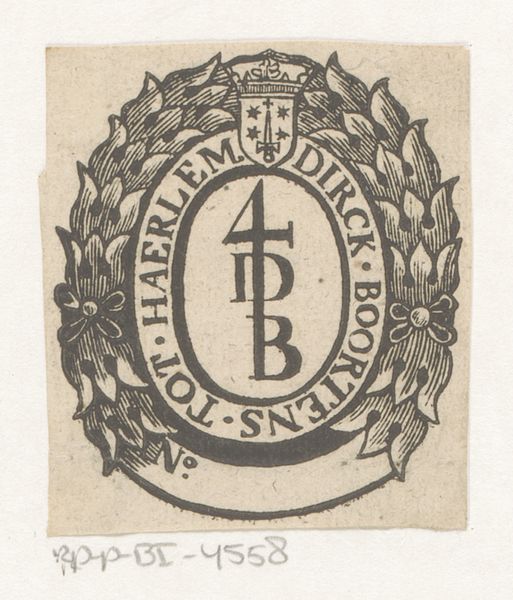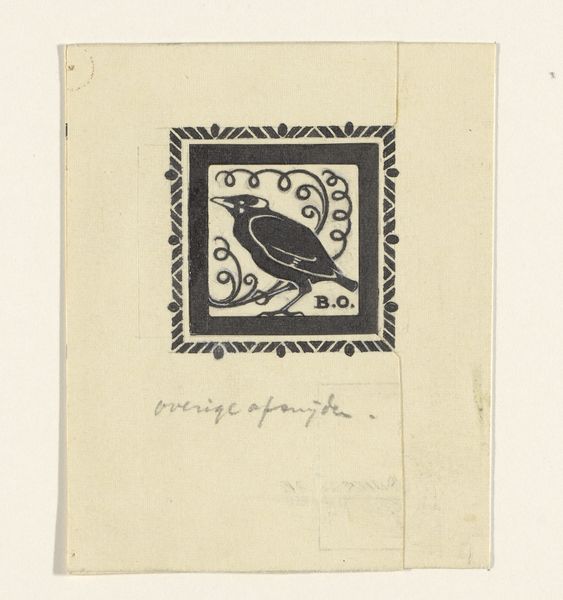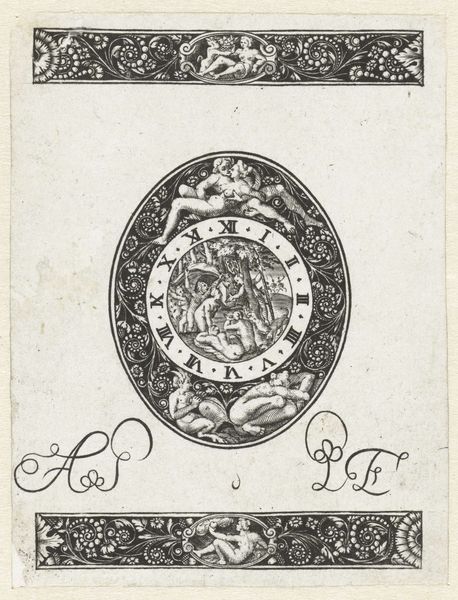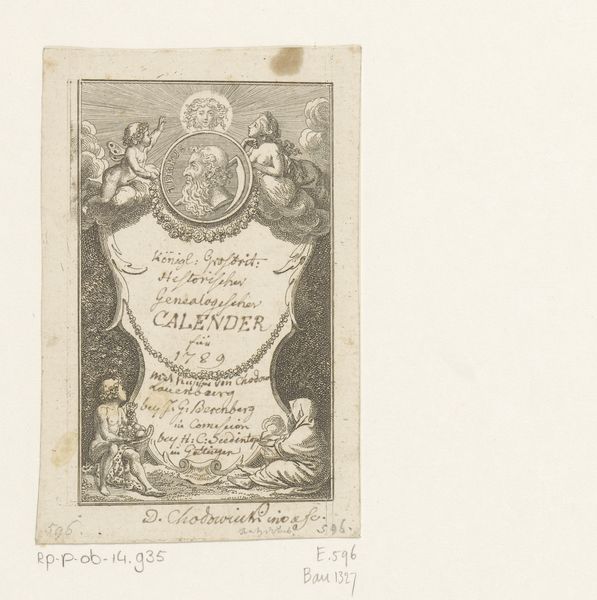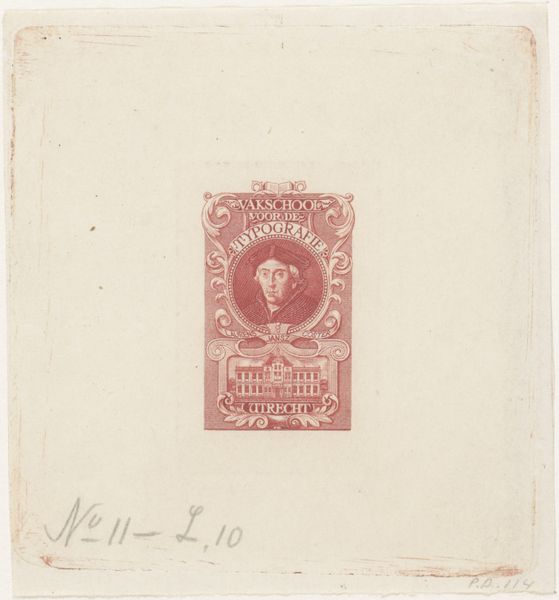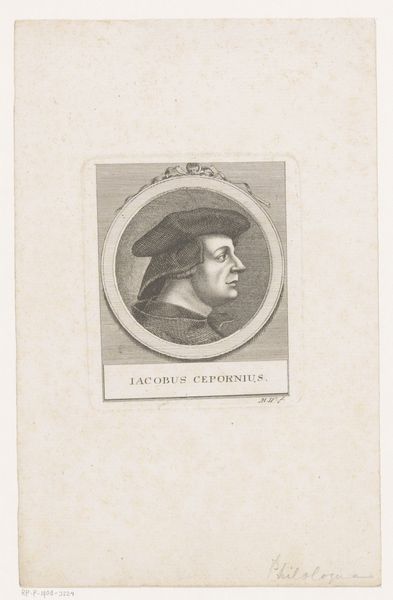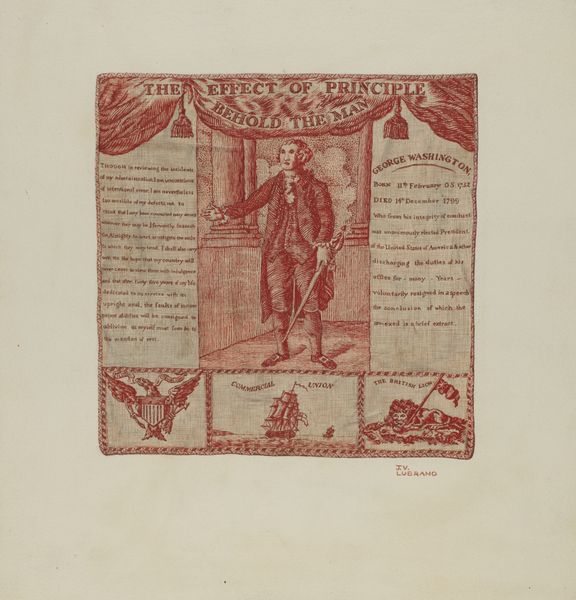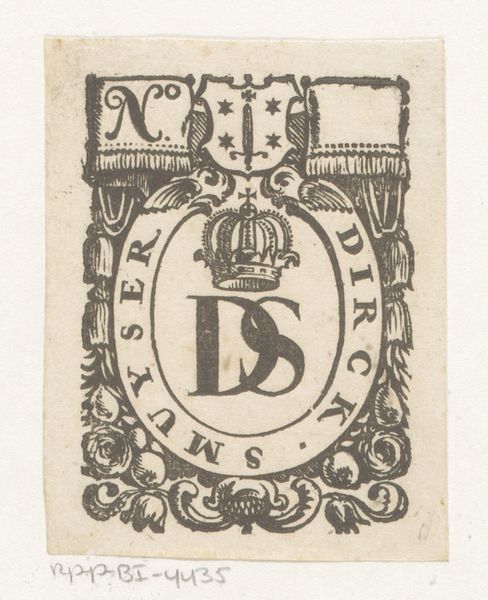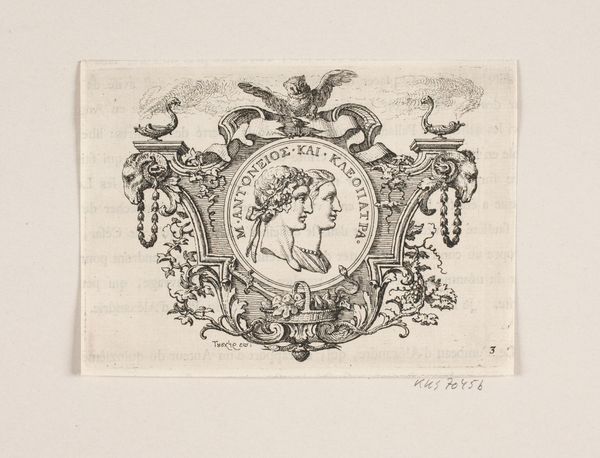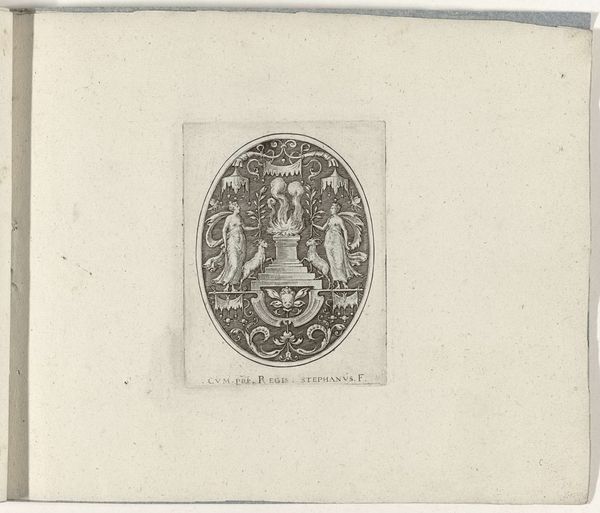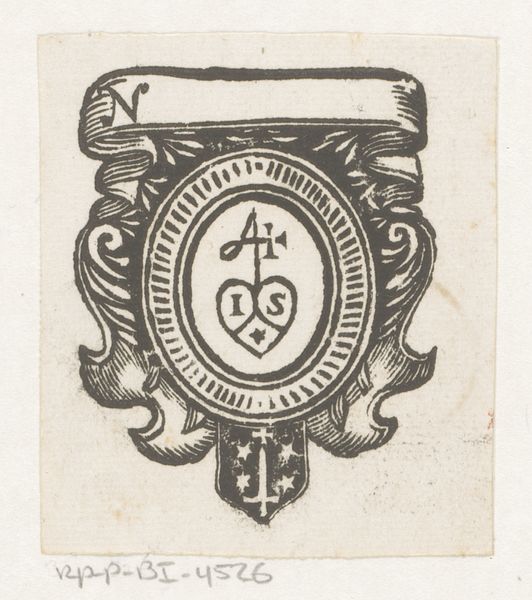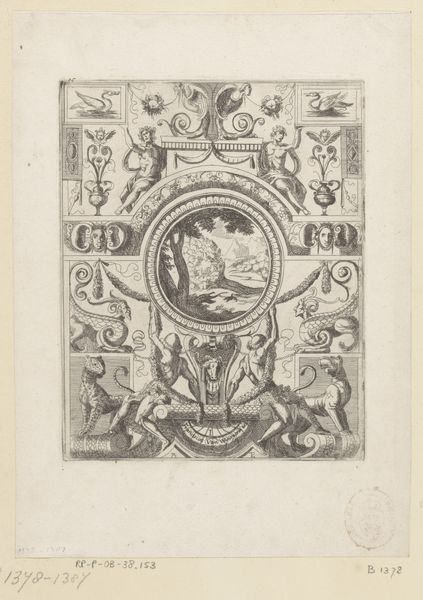
print, engraving
#
baroque
# print
#
engraving
Dimensions: height 51 mm, width 48 mm
Copyright: Rijks Museum: Open Domain
Editor: Here we have a baroque-style print from around 1720-1774, a portrait of Laurens Jansz. Coster, engraved by Cornelis van den Berg. It has an antique quality. The lettering around the edge feels weighty, and gives the central figure an air of importance, although his expression seems almost weary. How do you interpret the symbolic language here? Curator: It's a fascinating piece precisely because of that tension you identify. Note how Coster is framed not just by text, but by *reversed* text, a visual echo. He becomes a mirror himself, reflecting, and perhaps distorted by, the very narrative he is meant to embody. The reversed letters surrounding him serve almost as a memento mori, the ever-present reminder that our perception of greatness is also a construct of memory, of what we choose to preserve and how we choose to frame it. Editor: I see, so the reversed lettering isn't just decorative, but suggestive? Is it hinting at a possible unreliability? Curator: Precisely! Ask yourself what other symbols are embedded here. The very act of engraving, of transferring an image, carries symbolic weight, particularly for a figure credited with early printing. Printmaking promises replication, dissemination – immortality even. This particular print reminds me about the narratives of origins that we craft as a culture and what is selected to keep alive across time. Editor: It's made me think about how much stories evolve across time. It gives new resonance to the portrait to think that our impressions are constructed, interpreted, revised, rather than static things. Thanks. Curator: Absolutely. By contemplating images we can come to better contemplate history and cultural memory itself.
Comments
No comments
Be the first to comment and join the conversation on the ultimate creative platform.
